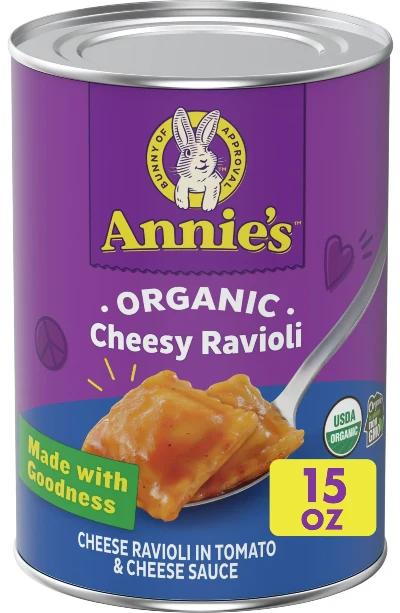If you’re kicking off the new year aiming to dodge those pesky plasticizers, brace yourself for a twist! You might think that going organic and steering clear of plastic-packed grub would do the trick, right? Well, hold onto your shopping carts, because Consumer Reports just dropped a bombshell: BPA and phthalates, those notorious health baddies, are practically everywhere in supermarket foods and fast food – organic label or not!
So, here’s the scoop from Consumer Reports’ latest findings. Phthalates (those bendy-making chemicals in plastics) and bisphenols (like BPA, used in plastic manufacturing) are pretty much the uninvited guests at our food party. And they’re not picky! They’re in 99% of supermarket and fast food items tested, whether they’re wrapped in plastic, paper, or if they’re organic.
Now, get this: Annie’s Organic Cheesy Ravioli, the poster child of healthy eating, was caught red-handed with a staggering 53,579 phthalates per nanogram!
Del Monte’s sliced peaches and Chicken of the Sea pink salmon weren’t far behind.
And here’s the kicker – these ‘healthy’ choices had way more phthalates than some fast-food items. Even McDonald’s Quarter Pounder With Cheese and Little Caesars Classic Cheese Pizza in their cardboard boxes had less.

But Wendy’s Crispy Chicken Nuggets? They’re in a league of their own with a whopping 33,980 phthalates per nanogram.
Only one hero in this story: Polar Seltzer Raspberry Lime, with a clean slate of zero phthalates.
Consumer Reports didn’t just randomly pick a few items off the shelf. They tested 85 different foods for a whole lineup of bisphenols and phthalates, including their sneaky substitutes. The list was extensive, covering everything from baby food to dairy, meats, veggies, and yes, even fast food.
Now, let’s talk about why we should care.
Studies have linked phthalates to some not-so-fun stuff like reproductive disorders and genital abnormalities. And BPA? It’s buddies with high blood pressure, Type 2 diabetes, and heart issues, says Mayo Clinic.
Here’s where it gets frustrating. We used to think these chemicals only hitched a ride into our foods through packaging. Not so. They’re getting in through food processing equipment and even from contaminated water and soil. Despite safety activists rallying for a ban on these plasticizers in food packaging and processing, the Food and Drug Administration in 2023 just said ‘nope’ to banning phthalates in food packaging.
Tunde Akinleye, the CR scientist leading the charge, is not mincing words. He says the current safety thresholds are way behind the times and don’t reflect the latest science. “We don’t feel comfortable saying these levels are okay. They’re not.” And with phthalates popping up in so much of what we eat and use daily, it’s tough to nail down what ‘safe’ really means for these chemicals.
More To Discover
- EPA Takes Action to Reduce Water Pollution from Meat Processing Facilities
- How Solar and Battery Storage Advances Are Powering Change in Africa and 2024 Will Be Even Better
- Looking To Transform Offshore Energy? Remove The Turbines For Towerless Power
- How New Tax Rules Will Make It Cheaper To Go Green And Connect To The Grid
“The more we learn about these chemicals, including how widespread they are, the more it seems clear that they can harm us even at very low levels,” Akinleye warns.
So next time you’re feeling smug about grabbing that pricier organic product off the shelf, think twice. After all, if your super healthy organic product that costs you twice as much has the same or even higher, ratio of chemicals… what are you paying for exactly?



















